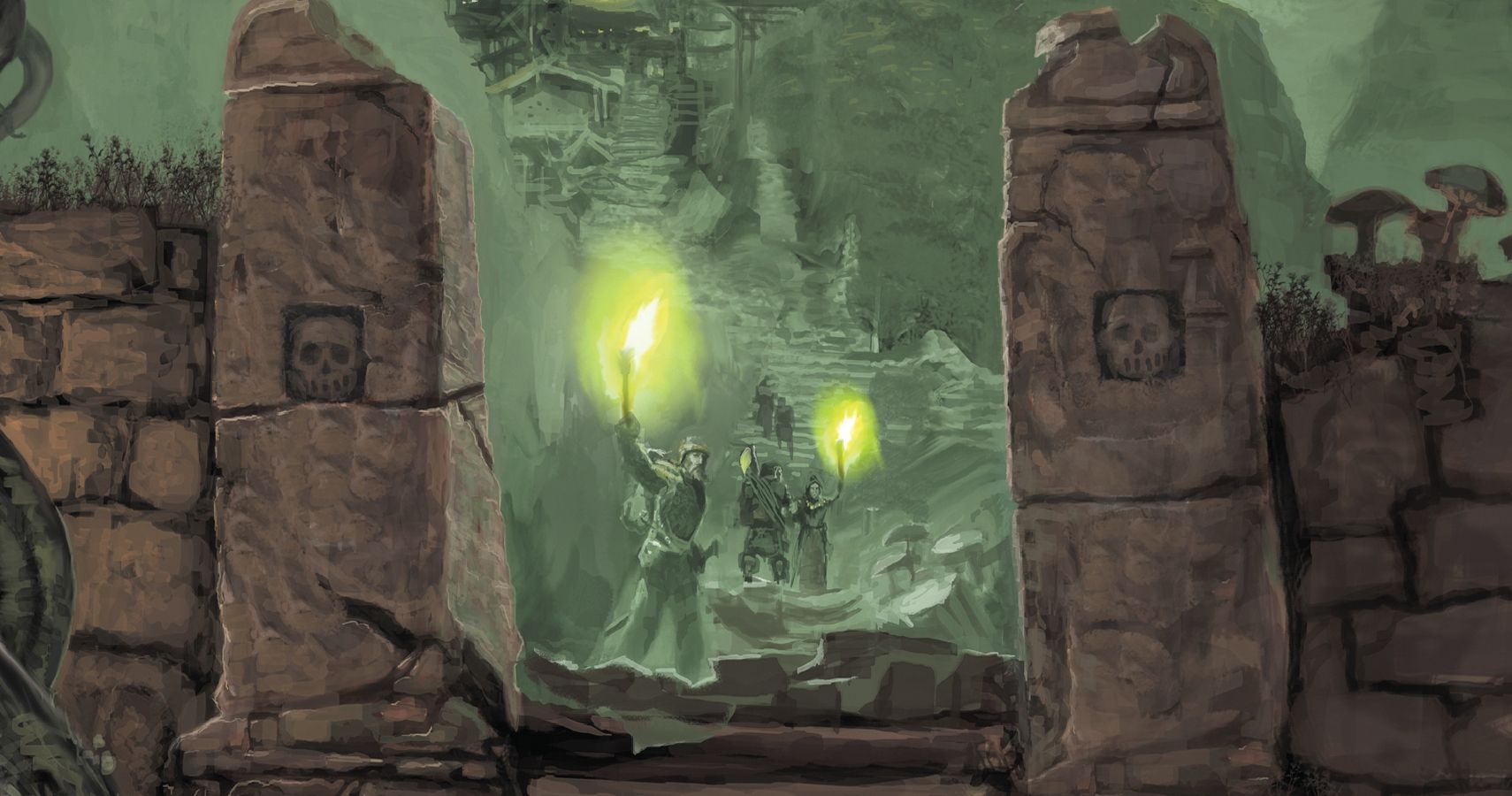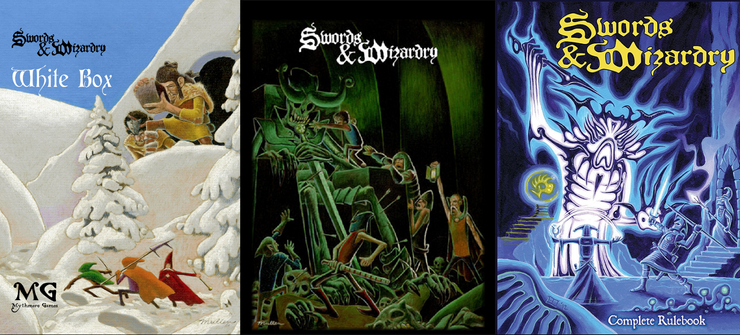Have You Tried Not Playing D&D?
It doesn’t matter what game you’re playing if you and your friends are having fun. As long as you’re not playing D&D.
You Are Reading :Have You Tried Not Playing D&D

“Have you tried not playing D&D?” is a question every grognard has muttered to his companions in between chugs of Mountain Dew as he begrudgingly waits for his next turn in D&D. Dungeons and Dragons 5th Edition crushed its competition by simplifying 3.5’s bloated character creation and reducing 4E’s reliance on crunchy grid-based combat, returning to the rules-light gameplay of earlier eras. With a renewed focus on accessibility and storytelling instead of metagaming and rules lawyering, Dungeons & Dragons, and tabletop in general, is more popular than ever.
Unfortunately, for niche titles like GURPS and Traveller and Warhammer Fantasy Roleplay, it can be difficult to find a group willing to roll the dice on a new game. Convincing your party to learn an entire system, buy all-new books, and create fresh characters can be a challenging quest. D&D 5th Edition may not be as much fun as your homebrewed live-action Bionicle chess boxing roleplaying game, but what good is a game with no players?
For Gygaxians who dreamed of the days when every chest was booby-trapped and every sword was cursed, it’s time to join the Old-School Renaissance. In OSR, death is a way of life. Monsters aren’t just skulking sacks of experience points: they’re hyper-lethal threats that should be avoided at all costs. If you say something, your character does too. All the +1 longswords in the world can’t save you from your own bad decisions. And if your best friend dies in the depths of a horrible tomb, you’d better ride your warhorse back to town and make a new one.
There’s a reason why AD&D is also short for “accidental death and dismemberment.”
But looting your basement for a water-damaged childhood copy of Chainmail or hunting down a mint TSR Advanced Dungeons & Dragons Planescape Box Set on eBay can be time-consuming and expensive. Not everyone owns a library of antique D&D rulebooks, and even if they did, who’s got time to read them all? Other than driving a DeLorean at 88 miles per hour back to the ’70s, there has to be a better way.
Enter retro-clones. These Herbert West-style homunculi of different rules and mechanics from the entire labyrinthine world of tabletop RPGs allowed you to play D&D while not playing D&D. Freaks and geeks nostalgic for sword-and-sorcery murder-hobo adventures whose plots resemble Arnold Schwarzenegger’s daily life were thrilled to know there existed numerous adaptations of early Dungeons & Dragons that preserved the spirit of early RPGs while adding some refinements from later editions, like using the core d20 mechanic and dumping THAC0. And thanks to Wizards of the Coast’s Open Gaming License, many of them were free.
OSRIC, Old School Reference and Index Compilation, preserved Advanced Dungeons & Dragons for a new generation of extremely short-lived characters. Thanks to a quirk of intellectual property law, game mechanics like hit points or saving throws cannot be copyrighted, only the books and layouts themselves. By removing the art and filing off the proper nouns leaving only the rules, Usherwood Publishing created a more comprehensible, organized, technically legal version of AD&D 1E, allowing normies who don’t own the official books to play the game. Some slight modifications were made, removing weapon speed, simplifying diseases, and renaming certain monsters for intellectual property reasons. Though its writing was dry and clinical, OSRIC is the lingua franca of old-school, allowing anyone with a pen and an imagination to write their own custom AD&D adventures and campaign settings.

Labyrinth Lord by Goblinoid Games was Daniel Proctor’s award-winning alliterative retro-clone of Basic D&D in all its red-box glory. LL repackaged and re-edited the original rules, adding support for character levels up to 20. This kicked down the door for Proctor to share B/X D&D with the world, creating a concise open-source version that maintained compatibility with most official modules. A revision was released in 2009 with various mathematical fixes and errata. Tragically, due to trademark claims that would make J. R. R. Tolkien spin in his Oxford grave, the rules still referred to Hobbits as “halflings.” Overall, however, Labyrinth Lord was the lord of the retro-clones, containing a full spell list, monster manual, and treasure tables within its brief 140 pages.
Mythmere’s Swords and Wizardry remastered 1974 OD&D using Third Edition’s d20 system. Like D&D 5th edition, it encouraged referees to customize and house rule anything they didn’t like using Rule Zero: the dungeon master’s word is law. Matt Finch included three different optional combat sequences and a combat table containing both THAC0-style descending armor class in addition to ascending armor class for players returning from newer versions. Out-of-the-box, Swords and Wizardry also supported high-level content like strongholds and followers, giving players clear goals and aspirations. Unlike 4E, spells were more versatile and free-form, which enabled the creative use of magic outside of battle. The complete book even had rules for ship-to-ship combat and siege warfare, which presented game masters with exciting story possibilities. Frog God Games are still supporting S&W with new material to this day.
After a spellbindingly successful Kickstarter campaign, Robert J. Schwalb’s Shadow of the Demon Lord launched in 2015: a monstrous 224-page hybrid of D&D 5th Edition and Call of Cthulhu. The game literally takes place during the apocalypse, which we now know is 2020. A satanic force roams the land, bringing hell and chaos in its wake. Whereas D&D 4th Edition’s Nentir Vale was about defending points of light, in the Shadow of the Demon Lord there is only darkness. Players created characters at level 0, chose their ancestry, and filled in an immersive single-page character sheet encircled with occult runes and pentagrams. Alignment was abandoned completely, replaced with insanity and corruption rules that slowly eroded your character’s consciousness until only madness remained. Apparently, demons don’t like Platonic solids, as the game used only twenty-sided and six-sided dice.
Remember, it doesn’t matter what game you’re playing if you and your friends are having fun. As long as you’re not playing D&D.
Source: How to Get Started Playing Old School D&D
Link Source : https://www.thegamer.com/have-you-tried-not-playing-dnd-dungeons-dragons-alternatives/
